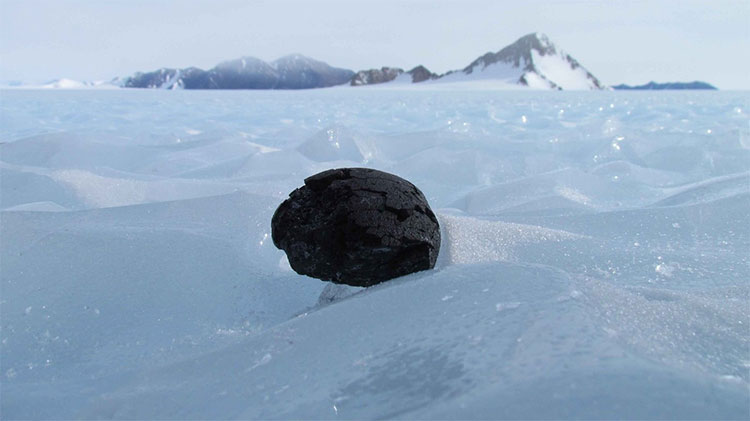Strange findings in Antarctic meteorites
By using a variety of microscopes, scientists say it is made up of a combination of graphite and silicate.
Scientists have found a small part of a star hidden in a meteorite falling in Antarctica. This star appears to be even older than the solar system, formed after an ancient star explosion before forming the solar system.

A meteorite falls in Antarctica.(Artwork).
The small part of this star is only 1 / 25,000 inches in size, shaped like a croissant. It can tell people something about the origin of the solar system.
By using a variety of microscopes, scientists say it is made up of a combination of graphite and silicate , which can form from a stellar explosion called Nova .
This explosion occurs during the exchange of energy between a normal star and a white dwarf (the star has burned its nuclear material). The explosion shoots the material into space, which has a small part in the Antarctic meteorite.
Tom Zega, Associate Professor at the University of Arizona's Moon and Planet Laboratory, said that the seeds were very ancient, carbon isotopes showed that it came from far away, not similar to any samples taken from the system. Sun.
Based on the study of the upper part of the meteorite, it has a life expectancy of at least 4.5 billion years. Scientists said the existence of this specimen was amazing and hoped to find larger parts.
- Discover large meteorite in Antarctica
- South Korea first discovered the meteorite in Antarctica
- Discover large meteorite in Antarctica
- The surface of the 'giant' meteorite landed on Earth
- Russian meteorite rain brings virus to Earth?
- What mystery makes the Antarctic ice sheet green?
- Find the answer to Antarctic paradox
- Strange findings under the ice layer of Antarctica
- The strange architecture is the alien underground 'underground cellar'
- He prepares to search for the dead planet in Antarctica
- Detecting concussions about 20 species of strange creatures in Antarctica
- The origin and name of meteorite
- The aircraft discharges waste causing Indians to think of meteorites falling
- The most exotic animals in Antarctica
 Van Allen's belt and evidence that the Apollo 11 mission to the Moon was myth
Van Allen's belt and evidence that the Apollo 11 mission to the Moon was myth The levels of civilization in the universe (Kardashev scale)
The levels of civilization in the universe (Kardashev scale) Today Mars, the sun and the Earth are aligned
Today Mars, the sun and the Earth are aligned The Amazon owner announced a secret plan to build a space base for thousands of people
The Amazon owner announced a secret plan to build a space base for thousands of people